Refine search
Actions for selected content:
5817 results in Programming Languages and Applied Logic
11 - Events and More Controls – Tips and Tricks for Programming
-
- Book:
- Programming in Visual Basic 2010
- Published online:
- 05 June 2012
- Print publication:
- 22 March 2010, pp 429-474
-
- Chapter
- Export citation
10 - Arrays and Structures – Organizing Data
-
- Book:
- Programming in Visual Basic 2010
- Published online:
- 05 June 2012
- Print publication:
- 22 March 2010, pp 367-428
-
- Chapter
- Export citation
8 - Writing Programs III – Tying It All Together, So Far
-
- Book:
- Programming in Visual Basic 2010
- Published online:
- 05 June 2012
- Print publication:
- 22 March 2010, pp 258-314
-
- Chapter
- Export citation
1 - Fundamentals of Design and Programming – Starting from Scratch
-
- Book:
- Programming in Visual Basic 2010
- Published online:
- 05 June 2012
- Print publication:
- 22 March 2010, pp 1-35
-
- Chapter
- Export citation
Contents
-
- Book:
- Programming in Visual Basic 2010
- Published online:
- 05 June 2012
- Print publication:
- 22 March 2010, pp vii-xiv
-
- Chapter
- Export citation
4 - Writing Programs II – More Controls and New Logic
-
- Book:
- Programming in Visual Basic 2010
- Published online:
- 05 June 2012
- Print publication:
- 22 March 2010, pp 105-143
-
- Chapter
- Export citation
Frontmatter
-
- Book:
- Programming in Visual Basic 2010
- Published online:
- 05 June 2012
- Print publication:
- 22 March 2010, pp i-vi
-
- Chapter
- Export citation
3 - Writing Programs – First You Walk, Then You Run
-
- Book:
- Programming in Visual Basic 2010
- Published online:
- 05 June 2012
- Print publication:
- 22 March 2010, pp 68-104
-
- Chapter
- Export citation
6 - Loops – Once Is Not Enough
-
- Book:
- Programming in Visual Basic 2010
- Published online:
- 05 June 2012
- Print publication:
- 22 March 2010, pp 184-223
-
- Chapter
- Export citation
Index
-
- Book:
- Programming in Visual Basic 2010
- Published online:
- 05 June 2012
- Print publication:
- 22 March 2010, pp 681-693
-
- Chapter
- Export citation
5 - Using If and Case – Decisions, Decisions, Decisions
-
- Book:
- Programming in Visual Basic 2010
- Published online:
- 05 June 2012
- Print publication:
- 22 March 2010, pp 144-183
-
- Chapter
- Export citation
Preface
-
- Book:
- Programming in Visual Basic 2010
- Published online:
- 05 June 2012
- Print publication:
- 22 March 2010, pp xv-xviii
-
- Chapter
- Export citation
15 - Crystal Reports – Tying Databases to Output
-
- Book:
- Programming in Visual Basic 2010
- Published online:
- 05 June 2012
- Print publication:
- 22 March 2010, pp 601-630
-
- Chapter
- Export citation
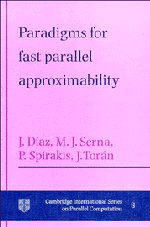
Paradigms for Fast Parallel Approximability
-
- Published online:
- 19 March 2010
- Print publication:
- 10 July 1997
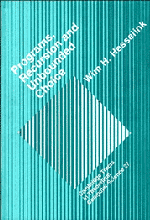
Programs, Recursion and Unbounded Choice
-
- Published online:
- 11 March 2010
- Print publication:
- 21 May 1992
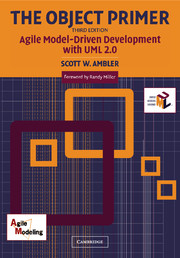
The Object Primer
- Agile Model-Driven Development with UML 2.0
-
- Published online:
- 03 March 2010
- Print publication:
- 22 March 2004
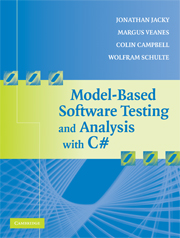
Model-Based Software Testing and Analysis with C#
-
- Published online:
- 02 March 2010
- Print publication:
- 12 November 2007
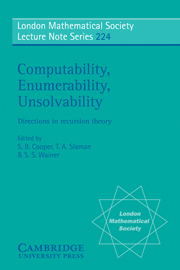
Computability, Enumerability, Unsolvability
- Directions in Recursion Theory
-
- Published online:
- 23 February 2010
- Print publication:
- 11 January 1996
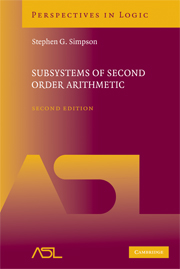
Subsystems of Second Order Arithmetic
-
- Published online:
- 19 February 2010
- Print publication:
- 29 May 2009
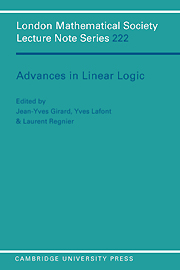
Advances in Linear Logic
-
- Published online:
- 17 February 2010
- Print publication:
- 22 June 1995
